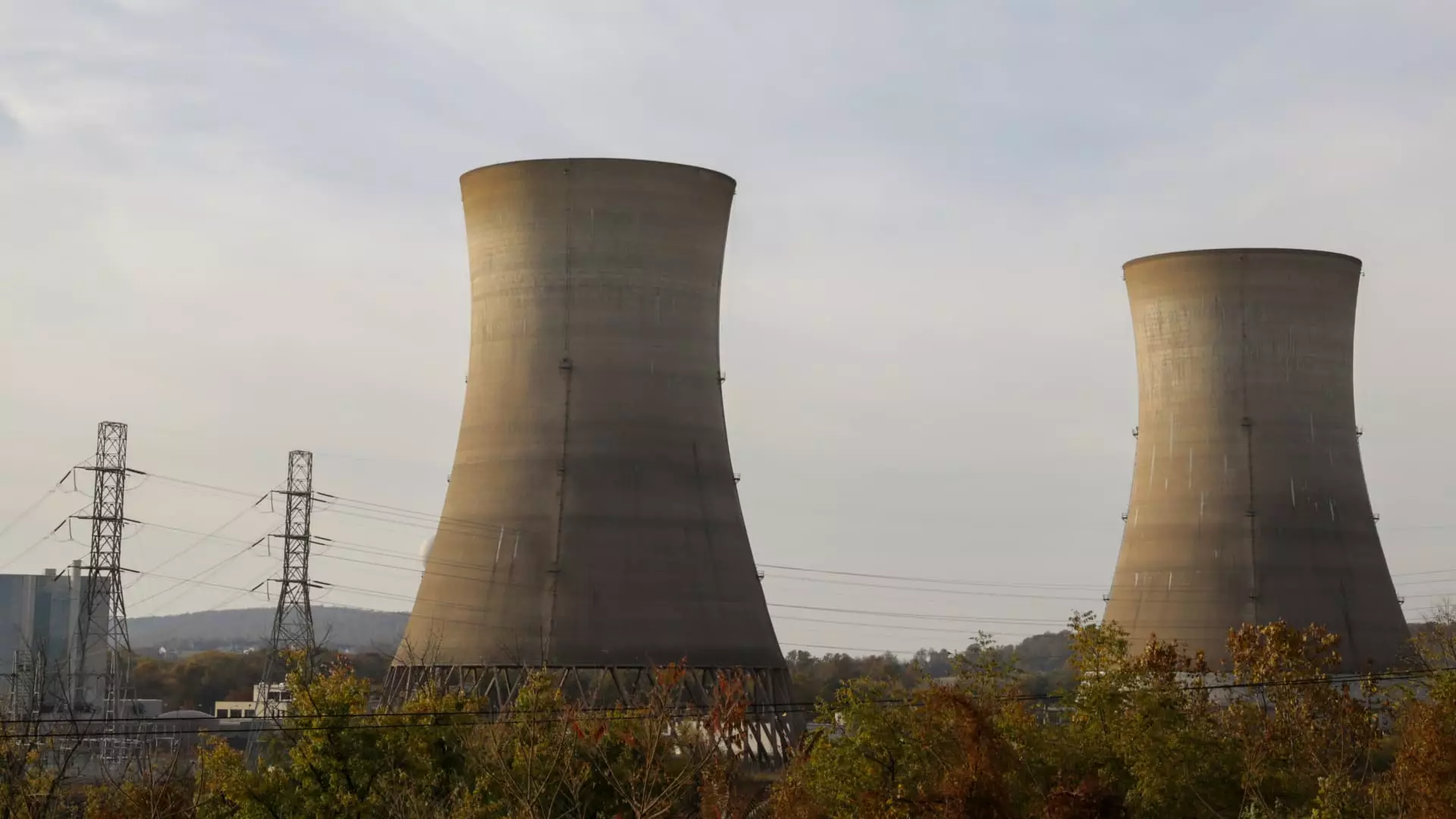In a time when energy demand is reaching unprecedented heights, the spotlight shines brighter than ever on uranium as a viable power source. John Ciampaglia, the CEO of Sprott Asset Management, asserts that we’re witnessing a transformative shift in the perception of nuclear energy. This perspective is not only timely but reflects a growing need for sustainable and reliable energy solutions amidst rising global challenges. As major tech giants push their operations—especially data centers—toward a more energy-intensive future, the question emerges: is uranium the answer or merely a temporary fix?
Uranium, long stigmatized by decades of nuclear disasters and environmental concerns, is finding itself at an unexpected crossroads. The escalating demand for energy has stimulated a renewed interest in nuclear power, touted by proponents as a clean energy source devoid of greenhouse gases. Ciampaglia’s firm is emerging as a major player in the shaping of this renewed narrative, evidenced by the impressive performance of the Sprott Physical Uranium Trust and the Sprott Uranium Miners ETF. However, while one must commend this upswing, a deeper inquiry beckons—can the momentum be sustained?
The Illusion of Stability
While the figures may dazzle, it’s imperative to scrutinize the long-term sustainability of uranium’s rise. Although Ciampaglia speaks of a “long-term, secular, and durable” trend, history has taught us not to take such statements at face value. The development of nuclear power plants—a keystone of the uranium industry—is notoriously time-consuming and costly. Jan van Eck, the CEO of VanEck, highlights this elephant in the room. Investors have little patience for delays, and nuclear projects often span years, if not decades, before they yield tangible results.
The push for secure energy must also grapple with the very real dangers that accompany nuclear technology. Inadequate safety protocols can lead to catastrophic outcomes—a fear that continues to loom in the minds of many. Thus, while the suggestion that other nations are reverting to nuclear power offers a glimmer of hope, such a trend should not overshadow the urgent need for robust safeguards and public consensus.
Power Play or Political Posturing?
The intersection of energy, politics, and public opinion cannot be ignored. Ciampaglia’s observations about nuclear energy gaining traction post-COVID-19 and amid geopolitical crises, such as the energy supply crunch in Europe, reveal how crises can ignite changes in perspective and policy. However, the uncertainty surrounding nuclear power’s future is rendered even more complex by the fluctuating political landscape, with past administrations showing varied levels of enthusiasm for nuclear energy. Recent moves by the Trump administration to expedite nuclear projects may catalyze growth, but these efforts need to be met with rigor in regulatory measures.
Are we in the midst of a passing wave, or could uranium indeed secure its position in the energy landscape? The fervor with which some stakeholders promote nuclear energy borders on opportunistic. With rising stock prices in the uranium sector, one wonders if the current enthusiasm is built on solid foundations or merely speculation.
The Case Against Complacency
As industrial giants and investors rush toward nuclear energy as a “savior” for a grid in crisis, complacency becomes a dangerous ally. The transformation of public perception of nuclear energy needs to go hand in hand with a comprehensive strategy addressing safety, public acceptance, and environmental considerations. Risks surrounding nuclear energy do not vanish when we fixate solely on its carbon-free credentials. A balanced approach that incorporates community engagement and transparent dialogue about nuclear waste and plant decommissioning is essential for fostering a sustainable future.
While uranium presents a compelling vision for a cleaner energy future, it holds equal potential for peril if not approached with due diligence and responsibility. The question remains whether this shift is truly durable, or if it risks becoming just another chapter in the tumultuous saga of energy supply and demand. The future of energy may very well hinge on our ability to scrutinize the allure of uranium with a discerning eye and a commitment to sustainable practices.

